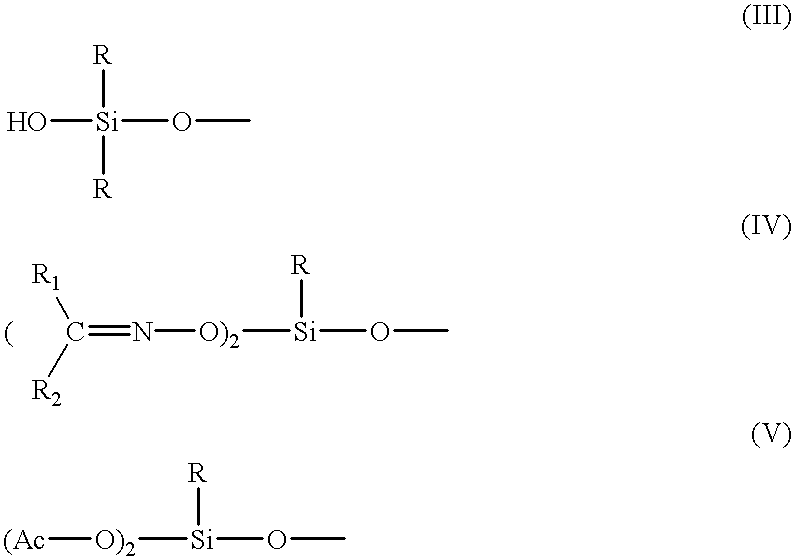Directly imageable waterless planographic printing plate
a planographic printing plate and waterless technology, applied in the direction of auxillary/base layers of photosensitive materials, instruments, photosensitive materials, etc., can solve the problems of increasing the number of application stages, increasing the cost of further expense, and poor sensitivity of the printing pla
- Summary
- Abstract
- Description
- Claims
- Application Information
AI Technical Summary
Benefits of technology
Problems solved by technology
Method used
Image
Examples
example 1
A heat insulating layer of film thickness 4 g / m.sup.2 was provided by coating a primer liquid of the following composition onto a degreased aluminium sheet of thickness 0.15 mm using a bar coater and drying for 2 minutes at 180.degree. C.
Next, on this there was provided a heat sensitive layer of film thickness 1 g / m.sup.2 by coating the following heat sensitive layer composition using a bar coater and drying for 3 minutes at 90.degree. C.
Next, on this was provided a silicone rubber layer of film thickness 2 g / m.sup.2 by the coating of a de-oxime type condensed type silicone rubber composition of the following composition using a bar coater and then performing moist heat hardening and drying at a dew point of 30.degree. C. and at a temperature of 125.degree. C.
On the laminate obtained as described above, there was laminated 8 .mu.m thick "Lumirror" polyester film (produced by Toray Industries, Inc.) using a calender roller, and there was obtained a directly imageable waterless planog...
example 3
On the heat insulating layer in Example 1, there was provided a heat sensitive layer of film thickness 1 g / m.sup.2 by applying the following heat sensitive layer composition using a bar coater and drying for 3 minutes at 90.degree. C.
Next, on this was provided a silicone rubber layer of thickness 2 g / m.sup.2 by applying an addition-type silicone rubber layer composition with the following composition using a bar coater and hardening for 2 minutes at 125.degree. C.
Using a calender roller, "Torayfan" polypropylene film (produced by Toray Industries, Inc.) of thickness 8 .mu.m was laminated to the laminate obtained as described above, to obtain a directly imageable waterless lithographic printing plate precursor. The developing and evaluation were carried out in the same way as in Example 1.
example 5
preparation of the plate material and evaluation were all carried out in the same way as in Example 3 except that the heat sensitive layer composition was changed to the following.
PUM
| Property | Measurement | Unit |
|---|---|---|
| glass transition temperature Tg | aaaaa | aaaaa |
| absorption wavelength | aaaaa | aaaaa |
| glass transition temperature | aaaaa | aaaaa |
Abstract
Description
Claims
Application Information
 Login to View More
Login to View More - R&D
- Intellectual Property
- Life Sciences
- Materials
- Tech Scout
- Unparalleled Data Quality
- Higher Quality Content
- 60% Fewer Hallucinations
Browse by: Latest US Patents, China's latest patents, Technical Efficacy Thesaurus, Application Domain, Technology Topic, Popular Technical Reports.
© 2025 PatSnap. All rights reserved.Legal|Privacy policy|Modern Slavery Act Transparency Statement|Sitemap|About US| Contact US: help@patsnap.com



